5 Under-Used Strategies in AAC
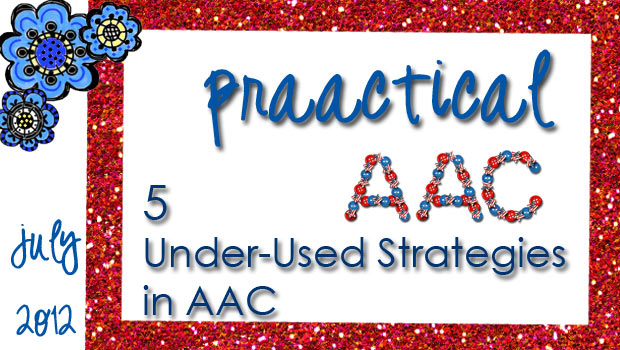
1. Partner-assisted scanning (PAS) offers great flexibility and spontaneity. Don’t want to take your SGD to the beach? A print-out of the screens and PAS is a great option. Missing key messages for the trip to the doctor’s office? A minute of brainstorming and the use of PAS may just save the day. No way for your client to access her device once she’s in bed? A communication board/book and PAS just might do the trick.
–
2. Voice banking: For people are likely to lose their speech due to a degenerative disease, like ALS, the option of saving samples of their speech and having it digitized for future use seems to hold great appeal. We’d love to see more SLPs familiarize themselves with this strategy and the tools to implement it, so that this option is more widely used about individuals whose speech is deteriorating.
–
3. Qualitative rating scales to express opinions and indicate gradations in feelings. (This free app, Autism Help 4 Me, is a good example of a scale to indicate pain or discomfort in emergency situations.) Make your own for an easy way for a client to express opinions and preferences.
–
4. Aided language input is a powerful way to build language in people learning AAC. If we had to name a top strategy for AAC clinicians to master, this would be it.
–
5. Task analysis: SLPs are language teachers but we don’t always get the in-depth training we need in general teaching methods. The skill of breaking down a task to its component steps is helps us be clearer in our instruction and gives us the option of teaching through backward chaining or forward chaining.
–
Filed under: PrAACtical Thinking
Tagged With: aided language input, ALS, ASD, intervention, partner assisted scanning, PAS, rating scales, resources, task analysis, teaching strategies, voice banking
This post was written by Carole Zangari

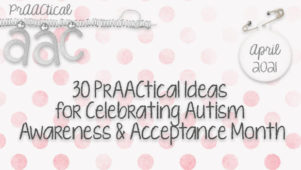
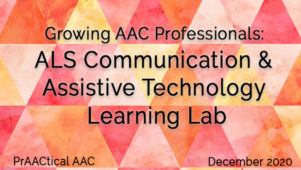
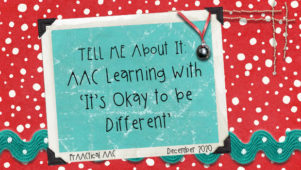
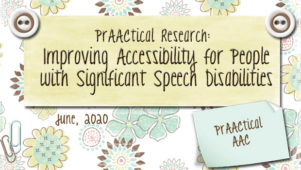
2 Comments
On the topic of voice banking – one ready made computer based tool for this that people might like to explore is eTriloquist http://www.etriloquist.com/ A free Windows program that provides text to speech output as well as categorized phrase storage, you can also record and store words and phrases and mix these in with the TTS ones. It is very user friendly and supported by the developer.
What a wonderful resource! Sounds like the same type of program as SpeakEasy – I will check it out. Thanks so much, David!